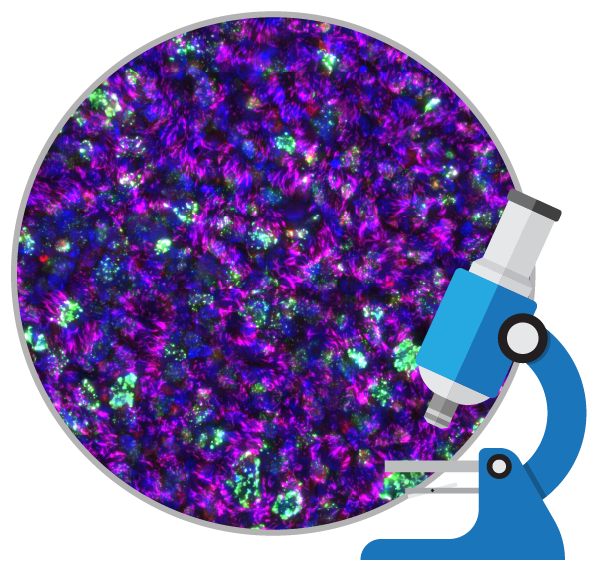Lung Diseases | Stem Cells Australia
Condition
Lung Diseases
Chronic lung diseases such as lung cancer, and chronic obstructive pulmonary disease (COPD) involve changes in the cells within the lungs. 31% of Australians had a chronic lung disease in 2017-2018, with 1 in 20 people over the age of 45 being diagnosed with COPD. Research on lung stem cells could shed light on the causes of such diseases, and may provide the basis for future treatments.
There is currently no recognised stem cell treatment for lung disease.

How could stem cells help?
The majority of research into lung stem cells has been done in mice, however studies are beginning to examine how previous results relate to human lung cells. Researchers are currently looking at the following areas:
Understanding the disease
Lung stem cells are present in the lungs during development and in the adult, but these cells are not exactly the same. Researchers know there are changes that take place, but little is known about how these cells are different.
Some researchers are studying the control mechanisms that determine which lung stem cells will be activated following injury or infection.
Researchers are also investigating how damage to genes that control the growth and multiplication of lung stem cells may lead to cells that continue to divide, multiply, and potentially becoming lung cancers.
Developing new drugs
A better understanding of lung stem cell and how they function in the body will improve our knowledge of how the healthy lung works. This in turn will shed light on the causes of lung diseases such as chronic obstructive pulmonary disease (COPD). Such research could lead to the development of new drugs or other treatments.
Replacing lost cells
Lung stem cells themselves may also be used in future therapies to repair or regenerate the lungs of patients with severe lung damage or disease, however it is important to note that this is a future endeavour only, and no stem cell therapies are currently able to be used in humans.
What are the challenges?
As scientists improve their understanding of the different kinds of human lung stem cells and how they work, they can then begin to develop clinical uses for lung stem cells.
Studying how human lung cells function is very difficult in the laboratory because these cells form complex structures and tissues that are difficult to replicate in the laboratory. However, scientists have been able to grow tiny versions of various organ in the lab, which are allowing some of the behaviours of human lung stem cells to be investigated.
Where can I find out more about clinical trials?
There are a number of sites that list clinical trials, including the clinicaltrials.gov registry. Please note that the scientific justification for the intervention and the credentials of those offering the service may have NOT been fully evaluated by this registry. Your findings may include listings that are NOT legitimate clinical trials. Please consult with your medical specialist or general practitioner as they are best placed to advise you on whether you would be a good candidate for a trial given your circumstances.
Please note: Although some clinics may claim to already offer stem cell treatments for various forms of lung disease, there are serious questions about the scientific rationale and the safety of many of these approaches. Currently, there are no proven, safe and effective stem cell treatments for this condition available in Australia, the EU, US or elsewhere.
